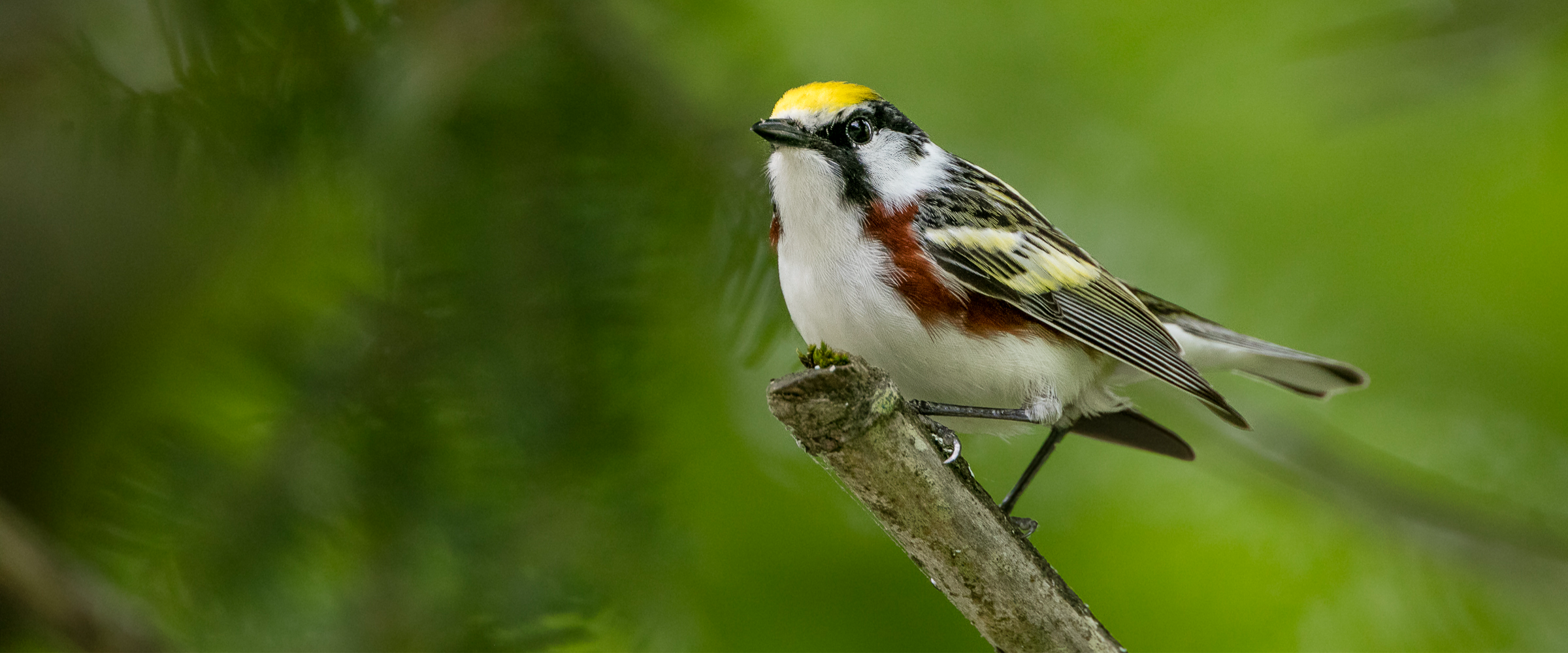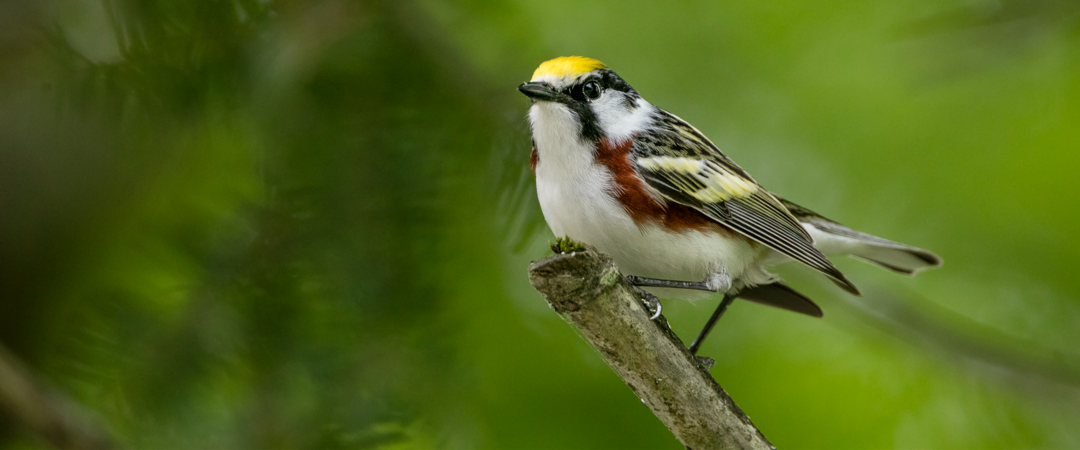COLD SPRING, NY—Installed on November 10, 2022, the new Motus antenna at the Constitution Marsh Audubon Center and Sanctuary in Cold Spring, New York, will help track migratory birds along the Hudson River Valley by picking up radio signals from any bird with a radio tag that flies within several miles of the site. The antenna will connect the Marsh’s important bird habitat to the global Motus network, providing scientists with data that will help them better understand how and where birds migrate.
“Motus” means “movement” in Latin and refers to the network’s ability to track the migration paths of individual birds from Canada south to Central America, South America, and the Caribbean. The Hudson River Valley is an important stopover site for many migratory birds along the Atlantic Flyway.
The New York Department of Environmental Conservation’s Hudson River National Estuarine Research Reserve (HRNERR) funded four motus receivers and collaborated with partners to create the Hudson Valley Motus Collaboration. Along with Constitution Marsh, HRNERR is also planning on installing a Motus receiver at the RamsHorn Livingston Audubon Sanctuary, a sanctuary in Catskill that is co-owned with Scenic Hudson, next spring.
“Having a Motus antenna installed at Constitution Marsh, and a tower installed at Ramshorn-Livingston Audubon Sanctuary, is allowing us to use new technology to better track birds, and see which birds are using the Hudson River Valley as their migratory path,” said Rebecca Schultz, interim center director at the Constitution Marsh Audubon Center and Sanctuary. “It is exciting that we can contribute to this regional effort, and also contribute, learn about, and easily exchange information about bird migration on an international level. This will help us to continue to protect these vital habitats and connect people with nature through science and education.”
Motus is especially critical in studying smaller birds and other small flying animals fitted with nanotags, tiny radio tracking devices often as light as an aspirin tablet. When a radio tagged bird flies nearby, it sends a ping to the Motus antenna. This data is transmitted to ground-based receivers, and then automatically updated to the publicly accessible Motus website.
“DEC recognizes the value of partnership, and our Hudson River National Estuarine Research Reserve is proud to be the catalyst of the Hudson Valley Motus Collaboration,” said Department of Environmental Conservation Region 3 Director Kelly Turturro. “Working closely with Audubon New York, Scenic Hudson, and New York State Parks, we will be collecting significant data on the birds and mammals using the Hudson River as a flyway, providing the data necessary to prioritize the protection of the Hudson River as a flyway and benefitting future conservation efforts.”
North America has lost nearly 3 billion birds over the last several decades, and the 2022 State of the Birds report shows that it will take concerted conservation efforts to prevent further decline. The growing Motus network can help gather important data on the movement of birds, ultimately helping us better understand and protect them throughout their life cycles. The growing Motus network can help gather important data on the movement of birds, ultimately helping us better understand and protect them throughout their life cycles.





